At the time of the film’s release back in 2004, absolutely no one, including the makers of the film James Wan and Leigh Whannell (who served as writer, co-producer and even co-starred in the film), would have the faintest idea that an independent film of this scale would go on to earn more than 80 times its budget, and spawn one of the most profitable horror genres of all time, including six sequels to the original and a spin-off, ‘Jigsaw’, released in 2017.
Well, you have got to credit James Wan for rising from an independent horror filmmaker, to making some of the scariest modern horror movies with his own recognized trademarks, developing entire franchises to being one of the most sought after Hollywood directors, being the only one apart from James Cameron and the Russo brothers to have two films in the billion dollar club, namely ‘Fast and Furious 7’ and last year’s ‘Aquaman’. His talent has taken him places, no doubt about that.
Coming to the film, ‘Saw’ has over the years garnered the rather rare title of being a cult classic, especially because the critics could not get behind it, dismissing it as torture porn, despite the film’s positive feedback at the Sundance. The audience though, completely loved the film, and even do so, till date: especially its twist ending that is nothing short of iconic today, that no one saw coming. Here, we try to decode the enigma behind the popularity of the film, especially among younger audiences, and how or why it stood the test of time the way it did, apart from delving into its plot. Read on.
Summary of the Plot
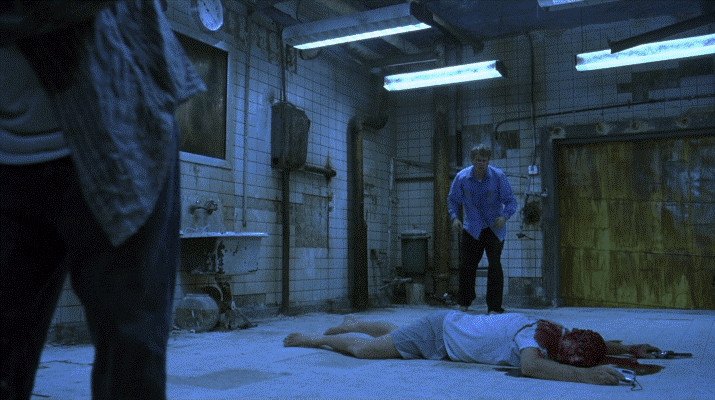
The film begins with a man, Adam, awakening inside a bathtub inside a dilapidated and disused bathroom with a floating, glowing object being sucked in as the bathtub drains. Adam realizes that he is chained at the ankle and there is another man, Lawrence Gordon, at the other corner of the room who faces a similar predicament. Between the two is another man’s corpse laying on the floor of the room: the man is holding a revolver and a tape recorder-player, and appears to have killed himself. Adam and Lawrence realize that there is a message for each of them in their pockets with a tape that they are able to play once Adam retrieves the player from the corpse.
Adam’s message urges Lawrence to play along and find a way to escape the room through clues hidden all over the room, while Lawrence’s message additionally contains a bullet, instructing him to kill Adam before 6 PM, failing which his wife and daughter would be killed and he would be left to die in the room. The two think it through and move to analyzing the clues leading them to a heart shape drawn onto the cistern of the WC tank, inside which they find a pair of hacksaws, and some photos that Adam conceals from Lawrence. The two immediately begin to attempt to cut into their chains fruitlessly, with Lawrence realising that the hacksaws were meant for their legs and not the chains, quickly allowing him to reach the conclusion that the sadistic nature of the trap pointed to it is being set up by the notorious Jigsaw killer, who did not kill his victims directly but trapped them in situations that did.
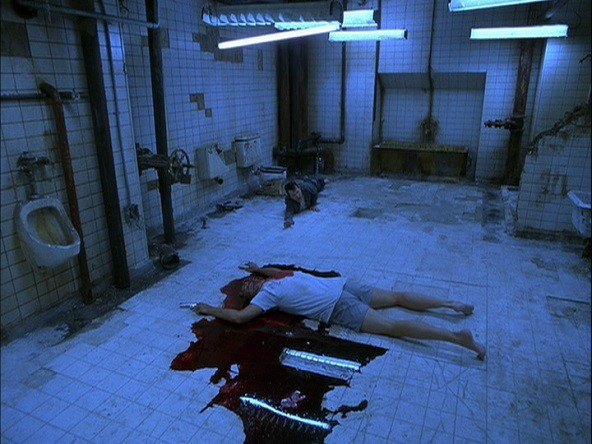
Lawrence reveals in a flashback that he knew of the Jigsaw killer since he was once a suspect with his penlight being discovered on one of the scenes of Jigsaw’s sick games, wherein a man was killed by being trapped inside a cage with razor chains, as a test of how much damage he could inflict on himself while attempting to escape. His alibi checks out and he is cleared, but he witnesses the testimony of the only survivor from a Jigsaw crime scene, Amanda Young (also a recurring character in the other ‘Saw’ movies that followed), a drug addict who was held captive with a reverse bear trap strapped to her mouth that would spring open and tear her jaws apart if she didn’t open the lock to the trap, the key to which Jigsaw places inside the stomach of another inmate, who is awake but inactive due to an opium overdose.
Surviving that incident makes Amanda change her life and forego drugs, with her ending up thanking the Jigsaw killer. The investigating officer David Tapp and his apprentice Steven Sing come inches closer to nabbing the Jigsaw killer, but he escapes after slashing Tapp’s throat, while Sing gets killed by a booby trap rigged to four shotguns that blow his head off. Since then, Tapp continues his own obsessive investigation into the case, convinced that Lawrence was the killer, even after he is discharged from the force.

Meanwhile, Alison and Diana, Lawrence’s wife and daughter, are held captive in their house at gunpoint that Tapp has been spying on. Adam discovers that a mirror in the bathroom where they were trapped worked both ways with a camera behind, and that they were being watched by Alison and Diana’s captor through a monitor at their home. Then, following one of the Jigsaw’s clues, Lawrence discovers a box hidden in the room that contains two cigarettes, a lighter and a cellphone that can only receive calls. The two men then come to recall how they were abducted and brought there.
Lawrence was abducted by a man wearing a pig faced mask from when he was trying to use a payphone last night after he had to leave for the hospital following an emergency call. Adam recalls something similar, but reveals that he knew about Lawrence’s affair with his student, and that he was paid to photograph him by a man, whose description reveals him to be Tapp. He further recalls that he was abducted from his own apartment by the same pig-masked figure. While in the bathroom, Lawrence and Adam try to stage a scene wherein Adam fakes choking and dying after smoking one of the cigarettes dipped in the corpse’s poisoned blood. The plan immediately backfires as Adam is zapped through the chains and he awakens.
In the confrontation that follows, Adam shows him the photographs he took of Lawrence as he found them in the cistern, and the two spot a photograph of a man inside Lawrence’s house looking out a window, one that Adam didn’t take. Lawrence identifies him as Zep, an orderly at the hospital, leading the audience to believe that Zep was indeed the Jigsaw killer. As they are talking, the clock strikes six and Zep, earlier revealed to be the captor at Lawrence’s place gets up to kill Alison and Diana as part of “the game”. Now to the much talked about ending.
Ending, Explained
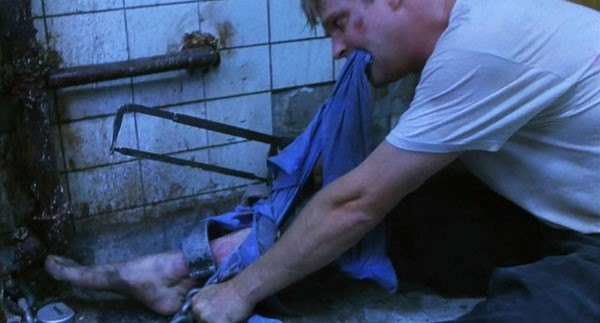
At Lawrence’s place, unbeknownst to Zep, Alison manages to free herself and fakes captivity to prance at Zep the first chance she gets. Tapp intervenes sensing something unusual, and struggles with fighting Zep, who narrowly escapes, giving Tapp chase, leading them to a sewage treating facility. In the sewers where the two face off, Tapp is shot in the chest, while Alison and Diana are safe back at the house. Losing the reach of his phone after being zapped too, he desperately cuts off his foot with the hacksaw as the phone rings to save his family. After escaping captivity and losing a foot, Lawrence crawls across and uses the corpse’s revolver to shoot Adam in the shoulder, who collapses. Zep enters the bathroom and attempts to kill Lawrence stating it to be “the rules”, but Adam revealed to be down with only a flesh wound overpowers him and kills him by bludgeoning him to death with the cistern lid.

Lawrence convinces him to stay as he crawls out to find help, while Adam searches Zed’s corpse for keys to the lock, but instead discovers a tape player revealing him to be part of the Jigsaw game himself, and not being the actual killer. In a twist that hits you out of nowhere, the corpse originally in the room wakes up, revealed to be John Kramer, the real Jigsaw killer, a patient of Lawrence’s diagnosed with terminal cancer. As Adam attempts to shoot him, he zaps him using a remote control too, and reveals that the key to his lock had been flushed down the bathtub drain as he woke up. He switches off the light and seals the exit to the room before leaving himself, yelling “Game Over” and abandoning Adam to die, alone and helpless, as his screams echo across the screen and the credits appear. It would also be wise to assume that Lawrence too met his end either at the hands of Kramer, who was bound to catch up to him, or of excessive blood loss from the severed limb.
Appeal

Unmistakably so, ‘Saw’ is considered to be a benchmark achievement in low budget independent filmmaking. Most of the reasons that the critics rated it so low can be primarily attributed to the low budget, including the production design and the acting that were mostly subpar. The dialogues too could have been better, and Wan certainly seems to have developed a lot of sophistication in his craft, almost undertaking a complete 180 transformation if his latest films, all of them blockbusters, are to be considered. However, with respect to ‘Saw’, it would be well for us if we knew what we are watching before expecting something that the film doesn’t promise in the first place. If you expect to be thrilled throughout and shocked in the end, you are in the right place, which is where most of the appeal of this film stems from.
Even when it was initially released, as opposed to now when it has come to be revered as a cult classic, the film garnered most of its appeal because of its own unique brand of psychologically tormenting thriller/horror, and not because of its attention to detail or because it was hailed to be a cinematic tour de force. Not to forget its now iconic twist ending, with the ‘Saw’ theme playing in the background. Well, what can I say? The fact remains that we are suckers for twist endings, ones that truly take our breath away. We love to have the rug taken from under our feet when we least expect it, and while ‘Saw’ delivers it in spades even as we are still guessing as to what conspired, that surely adds to its appeal as a hit back then and a cult classic now.

While there have been a fair share of movie psychopaths in the past, the Hannibal Lecters and the Jokers of the world, we knew better to add John Kramer to that list almost instantaneously, something that was cemented in the later ‘Saw’ films even as the quality dwindled, through the sheer ingenuity and dichotomy of his traps. You’d completely dread those, but still, sitting in the comfort of your home or the cinema seat, you’d not fail to appreciate or at least acknowledge how far out they were thought of.
To add to that, the sub-genre that ‘Saw’ belonged to specifically appealed to the public since it forced them to subconsciously reflect and think about their survival instinct: how far could one go to survive? What would you be willing to sacrifice knowing that you have wronged? All of these questions are sure to rattle you as a viewer, all the while adding to the fun of watching at least the first three films in this series that stand out by virtue of their quality. Looking for something more than that in a franchise that prides itself in the complete opposite would simply be an exercise in futility.
Final Word
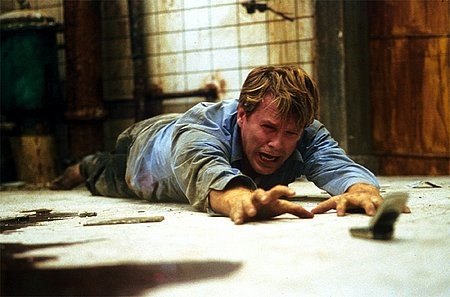
I adore ‘Saw’ for precisely all the reasons stated above, and not as a cinematic masterpiece, although it can be a good lesson for those looking carefully in churning out effective, low budget indie films, in which case it should be a complete must watch for aspiring new filmmakers. Some of the reviews even state it to be among the most enjoyable B-movies, and I concur, well mostly. A completely thrilling plot, with the slight slackening in the middle completely excused, psychological thrills, jump scares and gory horror galore, and an antagonist who keeps you guessing till the very end to deliver a twist that I am ready to bet you did not see coming from any direction, make this film my guilty horror pleasure.
Read More in Explainers: Before We Go | Se7en | 47 Meters Down

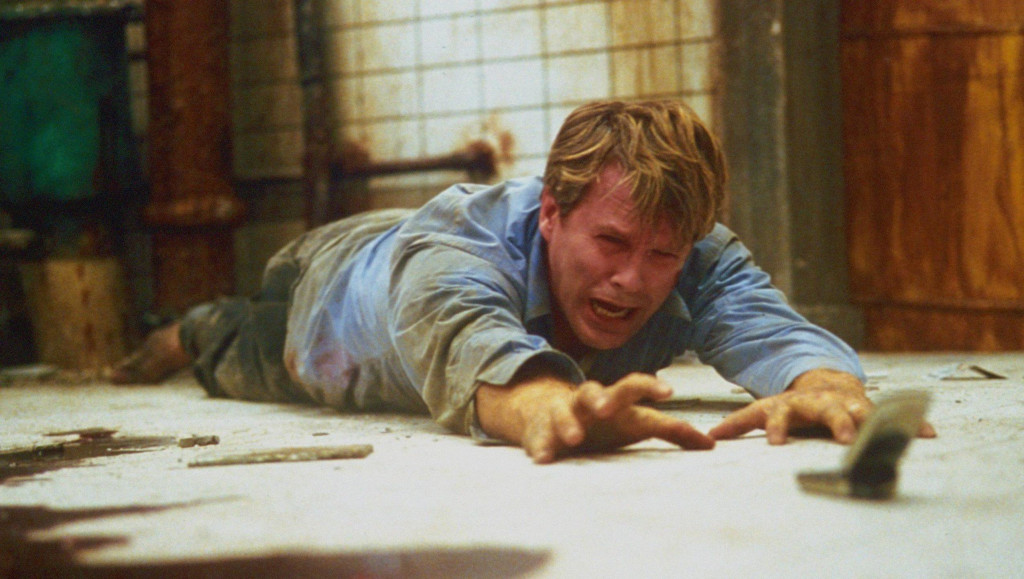
You must be logged in to post a comment.